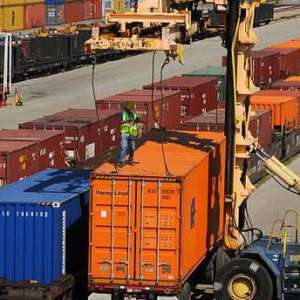National spot rate averages have been on a slow and steady climb through the beginning of 2017, and analysts predict further gains as the year continues. The spot rate increases come in response to both a relatively robust economy and tightening capacity in the face of the truck driver shortage. Shippers and carriers alike are responding to the increase, and anticipating contract rates to follow.
According to DAT, which monitors the trend, national spot rates have maintained relative stability throughout April in all three truck types (van, flatbed, and reefer), after a significant rate hike at the beginning of the month. The number of available loads predictably jumped with the arrival of spring, but DAT advises that the increase “exceeds season norms,” indicating that the second quarter is off to a robust start. Rates are up 91% from April of last year, while capacity is down 6.8%.
Should current trend lines hold, carriers may be in a very favorable bargaining position as capacity tightens further. This capacity crunch seems inevitable as the truck driver shortage begins to be felt in earnest, and the ELD mandate threatens to cut into driver productivity. A rising wave of carrier consolidation may also contribute to this trend, as there are fewer companies vying to set the lowest rates. Even so, spot rate forecasts are relatively modest, with industry analysts predicting an overall 1-3% increase over the course of 2017.
What is less certain is whether economic growth will continue at its current pace, given global uncertainty regarding Brexit, European elections, and an American economy still adjusting to President Trump’s first year in office. Nevertheless, many large shippers are reportedly eager to move up contract negotiations and lock in lower rates before the anticipated increases. Mark Montague, a pricing analyst for DAT, described spot rates as the canary in the coal mine for contract rates, usually lagging “three to six months behind” but still likely to follow spot rates in single-digit increases over the course of the year. Assuming these predictions hold out, shippers would be wise to budget for future increases, and, if possible, negotiate their contracts now.
The spot rate increases highlight the importance of good relationships between shippers and carriers. Trucking companies are eager to flex their bargaining power after a rough 2016, in which many fleets opted to keep their trucks parked rather than accept untenably low rates. According to John Larkin, a trucking analyst for Stifel Nicolaus, “truckload carriers grappled with persistently weak spot market pricing and contract customers who abandoned talk of collaboration and reverted to aggressive, Neanderthal style pricing tactics.” Now that the pendulum has swung in favor of carriers, analysts expect to see them offering priority to those shippers who agree to contract rate hikes. As is so often the case in logistics, cultivating long-term relationships between shippers and carriers may ultimately prove to be more profitable for all parties than seizing upon momentary market advantages.



